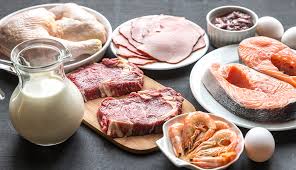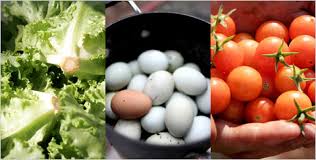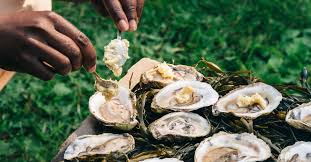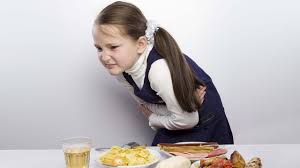Having explored various types of restaurants in the previous article, this article examines different types of food poisoning and their prevention methods.
Overview of Germs in Food Safety
Germs are ubiquitous, particularly in and on human bodies. Some germs, if transferred to food, can cause illness and, in severe cases, death.
These germs are microscopic, invisible to the naked eye, meaning food that appears clean and lacks odor or taste issues may still be dangerous if contaminated by harmful germs that have multiplied.
It is critical that everyone handling food or working in food preparation areas understands that food must be both clean and safe.
Definition of Food Poisoning
Food poisoning is an illness characterized by stomach pain, diarrhea, and sometimes vomiting, typically developing within one to 36 hours after consuming contaminated food.
Causes of Food Poisoning

Food poisoning occurs when harmful foods are consumed. Foods become harmful when contaminated by:
i. Chemicals that accidentally enter foods during growth, preparation, or cooking.
ii. Harmful bacteria (germs) from humans, animals, or other sources, or toxins (poisons) produced by certain bacteria. The majority of food poisoning cases are caused by harmful bacteria.
Chemical Food Poisoning
Certain chemicals may inadvertently contaminate food, leading to food poisoning. These include:
1. Arsenic used to spray fruit during growth, occasionally affecting fruit.
2. Lead poisoning from water in contact with lead pipes, used for drinking or cooking.
3. Antimony or zinc poisoning from acid foods stored or cooked in poor-quality enameled or galvanized containers.
4. Copper from incorrectly tinned copper pans or storage of acid foods, which may dissolve harmful amounts of copper.
5. Poisonous plants, such as some fungi, rhubarb leaves, or parts of potatoes exposed to sunlight above soil.
Prevention of Chemical Food Poisoning
Chemical food poisoning can be prevented by:
1. Using correctly maintained and suitable kitchen utensils.
2. Obtaining foodstuffs from reliable sources.
3. Exercising care with rat poison and similar substances.
Read Also: Crossbreeding as Tool for Tropical Livestock Improvement
Bacterial Food Poisoning

Food contaminated by bacteria is the most common cause of food poisoning. Cross-contamination occurs when bacteria transfer from contaminated to uncontaminated food via hands, boards, knives, or surfaces.
To prevent bacterial cross-contamination, observe the following:
1. Ensure food is sourced from reliable suppliers.
2. Handle foods minimally, using tongs, palette knives, or disposable plastic gloves when practicable.
3. Keep utensils and work surfaces clean and sanitized.
4. Use cloths impregnated with a bactericide that fades when no longer effective.
5. Pay particular attention when handling raw poultry, meat, and fish.
6. Wash raw fruits and vegetables thoroughly.
7. Clean methodically and frequently, adopting a “clean as you go” approach.
8. Keep foods covered as much as possible.
9. Use color-coded boards and knives for specific foods (e.g., red for raw meat, blue for raw fish, yellow for cooked meat).
10. Take extra care in thoroughly reheating prepared dishes.
Bacteria are minute, single-celled organisms visible only under a microscope. Present everywhere, most cannot move independently and require direct contact for transfer.
Some bacteria form heat-resistant spores that survive high temperatures for extended periods (up to six hours) and revert to active bacteria under favorable conditions, multiplying rapidly.
Certain bacteria produce toxins that mix with food, rendering it poisonous, with symptoms appearing within hours of consumption.
Others cause illness through large numbers entering the digestive system, multiplying, and causing infection. Some toxins are heat-resistant, meaning even boiling for 30 minutes may not eliminate the risk. Anaerobic bacteria grow without air, while aerobic bacteria require it.
Bacteria multiply by dividing every 10–20 minutes under suitable conditions, potentially growing from one bacterium to 500–1000 million in 10–20 hours.
Not all bacteria are harmful; some are beneficial, like those used in cheese production, while others cause spoilage, such as milk souring.
Food-borne diseases, distinct from food poisoning, are caused by certain bacteria transmitted via food, with bacteria multiplying in the food itself. The time from ingestion to symptom onset depends on the bacteria type.
Conditions for Bacterial Multiplication
Bacterial growth requires:
- Suitable food.
- Appropriate temperature.
- Adequate moisture.
- Sufficient time.
High-Risk Foods
Most foods are easily contaminated, but those with high vinegar, sugar, or salt content, or specially preserved, are less susceptible. High-risk foods include:
1. Stock, sauces, gravies, soups.
2. Meat and meat products (sausages, pies, cold meats).
3. Reheated foods.
4. Eggs and egg products.
5. Handled foods.
6. Milk and milk products.
The bacterium Campylobacter causes symptoms similar to salmonella and may be present in unpasteurized milk or undercooked chicken.
Read Also: Breeds of Sheep and Breed Characteristics for Selecting Sheep
Preventive Measures for Food-Borne Diseases

To prevent diseases spread by food and water:
1. Purify water supplies.
2. Pasteurize or heat-treat milk and meat products.
3. Exclude carriers from food preparation areas.
Temperature Control
Food poisoning bacteria multiply rapidly at body temperature (37°C) and grow between 5°C and 63°C, common in poorly ventilated kitchens. Foods should be stored in a larder or refrigerator, not the kitchen.
Lukewarm water fosters bacterial growth, so hot water must be used for washing dishes to prevent contamination.
Boiling kills bacteria in seconds, but toxins require 30 minutes of boiling, and the most heat-resistant spores need four to five hours. Both high temperature and sufficient duration are essential for safety.
In warm weather, store foods at low temperatures and reheat thoroughly, especially for non-boilable foods.
Cold does not kill bacteria but prevents multiplication; in deep freezers, bacteria remain dormant. Contaminated foods refrigerated and then warmed in a kitchen may allow bacteria to multiply if returned to the refrigerator.
Common Food Poisoning Bacteria
The most common food poisoning bacteria are:
1. Salmonella Group: Causes illness due to large bacterial numbers in food, present in animal and human intestines, spread via excreta. Contamination occurs through insects, vermin, infected food (e.g., duck eggs), cross-contamination, or carriers. Foods most affected include poultry, meat, and eggs.
2. Staphylococcus aureus: Found on human skin, nose, throat, or sores, contaminating handled foods like pork, pressed beef, pies, and custards.
3. Clostridium perfringens: Originates from human and animal intestines and soil, with spores surviving light cooking, affecting raw meat.
4. Clostridium botulinum: Causes severe food poisoning.
5. Campylobacter: Causes diarrhea, present in poultry and meats, killed by adequate cooking.
6. Bacillus cereus: Found in soil, contaminating vegetables and cereals like rice, with spores germinating in warm, moist conditions.
7. Listeria: Aerobic bacteria causing serious illness, found in soil, vegetables, and animal feed, growing at refrigeration temperatures.
8. Escherichia coli (E. coli): Indicates fecal contamination, with pathogenic strains causing abdominal pain, diarrhea, or severe infantile/travelers’ diarrhea, surviving at temperatures as low as 4°C.
Sources of Infection
Food-poisoning bacteria originate from:
1. Soil.
2. Humans (intestines, nose, throat, skin, cuts, sores).
3. Animals, insects, and birds (intestines, skin).
Prevention of Bacterial Food Poisoning
To prevent food poisoning:
1. Prevent bacteria from multiplying.
2. Prevent bacterial spread.
Achieve this through high hygiene standards for personnel, premises, equipment, and food handling, including:
1. Washing hands after toilet use and before/after handling food.
2. Covering hair while cooking.
3. Keeping fingernails trimmed and clean.
4. Maintaining clean cooking and washing areas.
Chemical and Metallic Poisoning
Residues of drugs, pesticides, or fertilizers in raw materials, or chemical spills during processing, may cause poisoning. Metals causing toxicity include:
1. Antimony: Found in enamel, causing poisoning under certain conditions.
2. Copper: Exposed in worn saucepans, leading to poisoning.
3. Lead: Contaminates through airborne sources or water, highly toxic.
4. Tin and Iron: React with acid foods in cans, producing harmful substances.
5. Zinc: Used in galvanizing, unsuitable for direct food contact, especially with acid foods.
6. Aluminium: Linked to health concerns like pre-senile dementia.
Ill health from food poisoning can be prevented by adhering to strict hygiene practices, ensuring safe food handling, and maintaining clean environments.
Do you have any questions, suggestions, or contributions? If so, please feel free to use the comment box below to share your thoughts. We also encourage you to kindly share this information with others who might benefit from it. Since we can’t reach everyone at once, we truly appreciate your help in spreading the word. Thank you so much for your support and for sharing!

